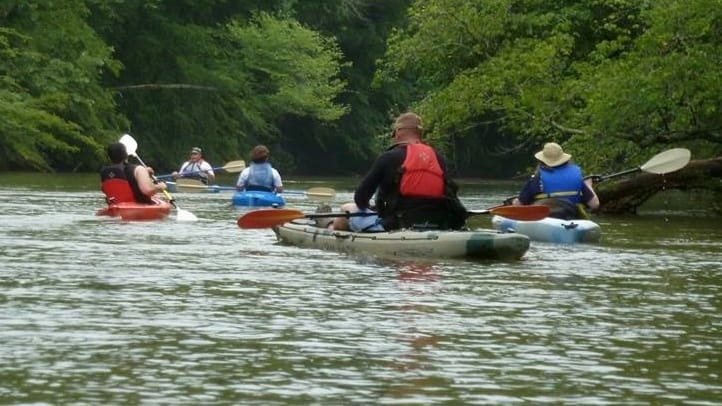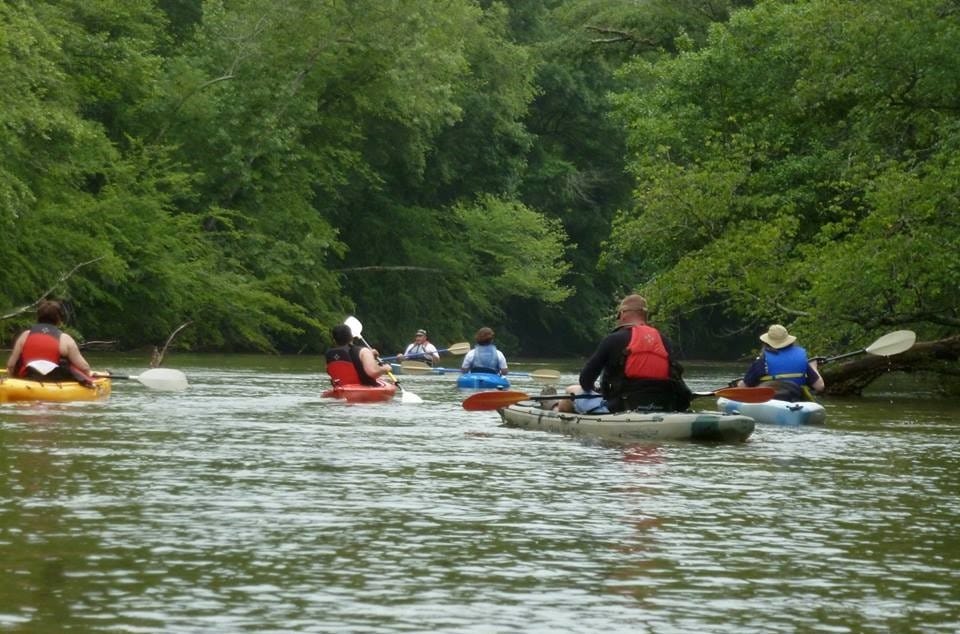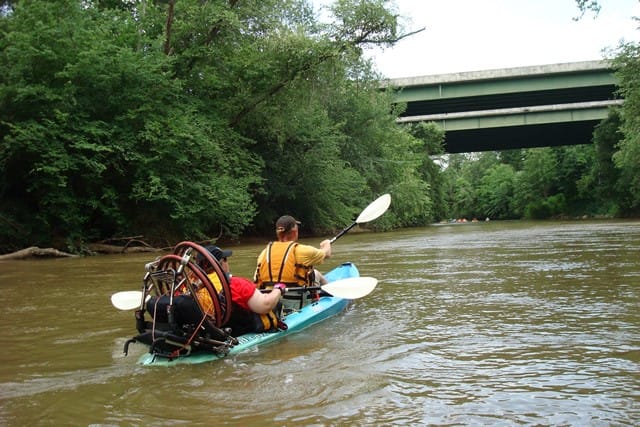Winding calmly toward the Atlantic Ocean from the Blue Ridge Mountains, the Saluda River makes its way through northwestern South Carolina, brushing past old mill towns, rolling countryside and historic landmarks. Once a vital piece of the area’s business, the river became a quiet source for hydroelectric power while its potential for recreation went unnoticed. Until recently.
About 10 years ago, Matt Schell, the director for Anderson County’s Department of Parks, Recreation and Tourism, saw a chance to create a recreational space available to everyone along the Saluda River. Since the project’s public debut in 2009, he has been committed to meeting and exceeding the requirements set for accessibility by the Americans with Disabilities Act. Determined to make the Saluda River an opportunity for all people to connect with an incredible natural resource, he reached out to the National Park Service – Rivers, Trails and Conservation Assistance program to make it happen.
A River for Everyone: Making it Accessible
With the Saluda River to the east and Lake Hartwell and the Savannah River to the west, Anderson County is surrounded by water. “We’re bounded by these two beautiful natural resources which make Anderson County a stand-out,” Schell said. “But there was no formal recreation development or ADA access on either one of them.” Though the lakes have consistently attracted anglers to the area, the Saluda River was largely overlooked.
“It started with Matt talking about these 48-miles and one access point at Dolly Cooper property in Anderson County,” said Bill Lane, a project specialist for the National Park Service – Rivers, Trails and Conservation Assistance program. “He wanted to put an ADA facility there with a dock that floats up and down… Since then it’s just grown like crazy.”
The growth did not come easily, however. From the river itself, which is known to fluctuate up to 19-feet to the hydroelectric dams which interrupt the 48-mile stretch, and towns that were hesitant to give support, the project encountered its fair share of roadblocks. Despite the challenges, Schell and his team were steadfast in their mission of accessibility, making sure that every step they took aligned with the requirements set by the Americans with Disabilities Act.
The fluctuating water level, usually a challenge for river access, lent itself well to their plans. “We were able to secure the state model… the EZ Dock floating kayak launch,” explained Schell. “It floats on the river similar to a dock system, but it has a transfer bench.” The floating launch grants access to the river no matter the water level and the transfer bench allows for an easy transfer from wheelchairs, allowing users to pull their kayak into the launch and transfer smoothly in and out of the dock, using only their upper body strength.
Once they had the project off the ground, they needed support. Lane officially joined the project in 2013, bringing with him technical assistance and kickstarting community engagement in Anderson County. Lane aided with mapping the river and access points, developing a paddle guide and working with local partners and power companies with investment in the river.
“Bill coming in garnered a lot of attention,” Schell said. “You know, when we’re spinning the same wheels for a little while, adding that extra life into [the project] in the form of just being able to say, ‘recognized by the National Park Service’ does do a lot of good.”
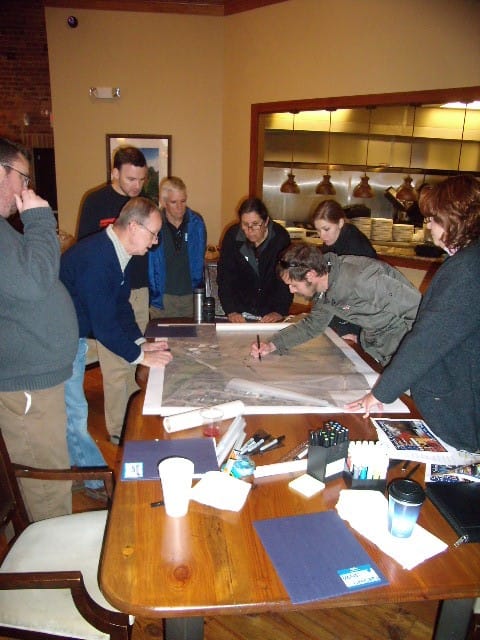 Lane organized a one-day design charette for the community members and stakeholders to develop an ADA accessible solution for getting canoes and kayaks around a dam in Piedmont. More than 15 members from the American Society of Landscape Architects in South Carolina volunteered their expertise at the charette to help make the community’s idea a reality.
Lane organized a one-day design charette for the community members and stakeholders to develop an ADA accessible solution for getting canoes and kayaks around a dam in Piedmont. More than 15 members from the American Society of Landscape Architects in South Carolina volunteered their expertise at the charette to help make the community’s idea a reality.
With the National Park Service on-board, the project started to ramp up.
In June 2015, the project was featured on the Americans with Disabilities Act 25th Anniversary Legacy Tour. In one year, an exhibition bus made 115 stops, covering ground in 33 states across the country, to raise awareness for the 25th anniversary of the Americans with Disabilities Act. “They stopped at all these major cities that were doing notable ADA inclusion projects across the United States,” Schell said. “They were in all the major cities… the only place on that roster that was not a major city was Anderson, South Carolina… it was a huge compliment to what we as a county were doing.”
Being recognized by the Americans with Disabilities Act was a breakthrough for the project, putting the river’s potential for inclusive tourism and recreation on the county’s radar. “That kind of thing really just helped our administration and our county council… that’s when they get that support in knowing that we’re doing the right thing,” Schell said.
Anderson County does not have a hospitality tax, thus making every partner and sponsor vital to the success of the project. With the local government and community supporting the project’s goals and high standards for accessibility, potential partners down the river began to take notice.
A River by Everyone: Partnering with the Community
For the past 10 years, Anderson County’s Department of Parks, Recreation and Tourism has partnered with local businesses to host the project’s primary fundraising event, the Saluda River Rally. Not only does the event bring awareness to the project but it also kicks off the summer recreation season. Crowds gather at the banks of the river at Dolly Cooper Park and enjoy a day filled with boating, bluegrass and barbeque.
“It’s like a rural miniature Woodstock going on by the river… It’s a phenomenal event that just grows in size year after year,” Lane said. “We get to expose people to ADA accessibility that may never have been exposed to it until they get here.”
The river rally also hosts inclusive recreation activities. “We use it as a Special Olympics fundraiser so that our special needs athletes are actually on the river with the participants,” Schell elaborated. “We were able to get some people out there that have degenerative diseases that had this on their bucket list. This has been all about inclusive access on the river… to give some people a river experience that they would have never gotten otherwise.”
The river rally has become a major event, put on by the entire community with partners and sponsors coordinating, funding and facilitating the day-long fundraiser. In 2019, more than 350 people from across the country registered to participate. Many paddle nine to 15-miles from Dolly Cooper to Piedmont, coming across the now-open Piedmont Dam.
The dam is one of three along the 48-mile project stretch. When the project first started, the hydropower companies were concerned about the potential for paddlers to sustain injuries while portaging (carrying their boats) around the dams.
“It was very serious,” Schell said. “There would be alarms that would sound if they (the hydropower companies) saw somebody on their property.” Even river clean-ups near the dam were supervised by the dam management groups and required signed waivers.
Today, Enel Green Power, the group that manages the dam, provides a large portion of funding for the Saluda River project. “We (Schell and Lane) were able to… let them know how much of a recreation component they’re interrupting… and as a navigable waterway, they do have an obligation to help people get around their dam and back on the river,” Schell said. “We’ve actually had a 180-degree attitude change… so we have a great relationship now. We still have to sign waivers, but there’s not that fear.”
Now, all three of the dams are paying sponsors, and each of them are prepared to help paddlers portage across.
“Some of these hydropower sites will ultimately be small craft launches, so there are a couple that come with future boat ramps,” Schell explained. These boat ramps will be accessible and are designed to give access to emergency responders, who have been limited in their ability to assist with water rescues up to this point.
Towns like Piedmont and Powdersville have seen economic development in the past 10 years that had been “on pause” since the mills went out of business. “This recreational trail is helping to revive two towns… Powdersville is our fastest growing unincorporated town in Anderson County,” Schell said.
This notable development has added to the project’s recent momentum. In 2019, the project saw significant progress, as the economies of these small towns recognized their recent growth and found ways to financially support the Saluda River Blueway that they simply were not able to offer when the project began.
“These are really small towns, very rural in nature… so for them to put their money and all their energy into something very unique like this is awesome,” Lane said.
Building on the momentum that evolved when the National Park Service began collaborating with the community, Schell and his team acquired another access launch in Piedmont. Not only are towns offering support, but energy companies are funding new access points, and the local government and private agencies are awarding grants for the project as well. Schell added that this calendar year will be the largest advancement on the river corridor since the project started.
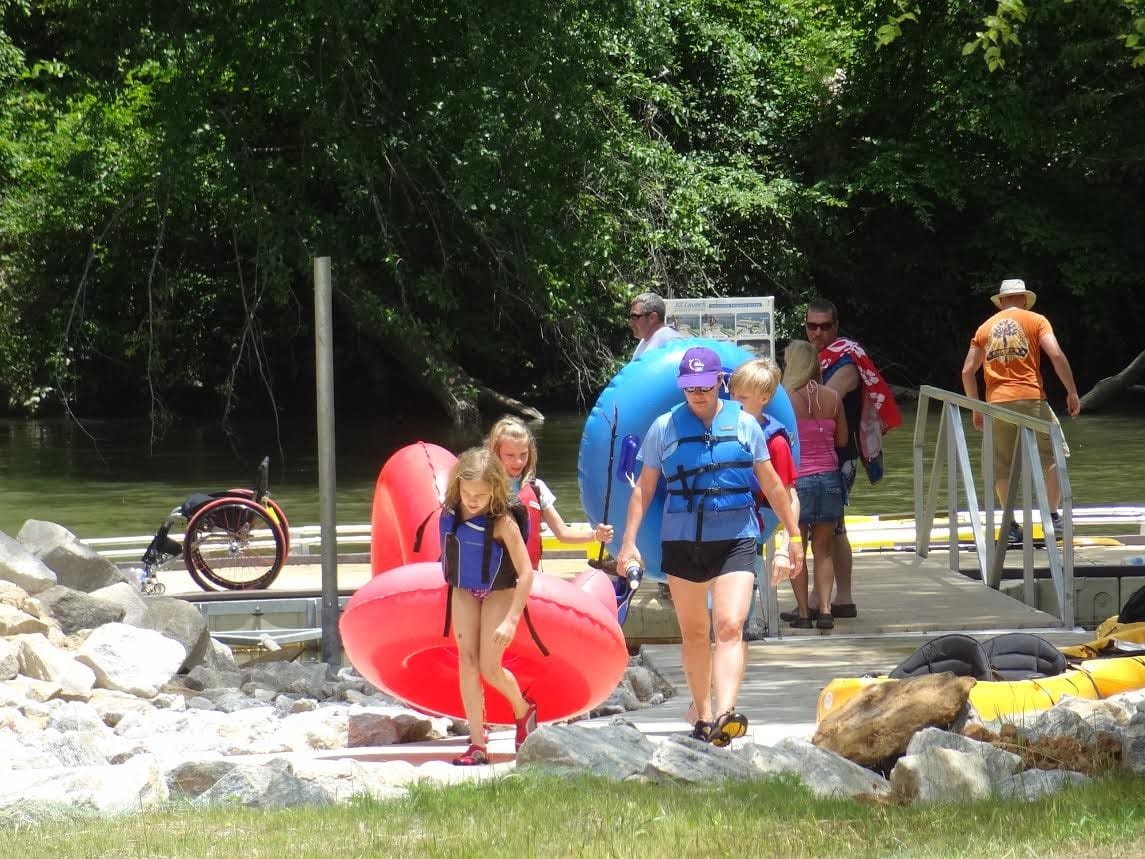 These towns are committed to supporting the Saluda River Blueway not only for the development it has brought, but for its mission of inclusive recreation. Lane himself came away from the project motivated to take his new understanding of accessibility to other National Park Service projects. “It got me looking at other access points that I’ve worked on in the past on other water trails and going back to my past partners to make all their access points ADA accessible,” he said. “Kudos to Matt [Schell] for doing that and getting me inspired to not ignore that user group.”
These towns are committed to supporting the Saluda River Blueway not only for the development it has brought, but for its mission of inclusive recreation. Lane himself came away from the project motivated to take his new understanding of accessibility to other National Park Service projects. “It got me looking at other access points that I’ve worked on in the past on other water trails and going back to my past partners to make all their access points ADA accessible,” he said. “Kudos to Matt [Schell] for doing that and getting me inspired to not ignore that user group.”
Ember Rensel is a Communications Fellow with the National Park Service. Her article is provided by Anderson County Department of Parks, Recreation and Tourism.

